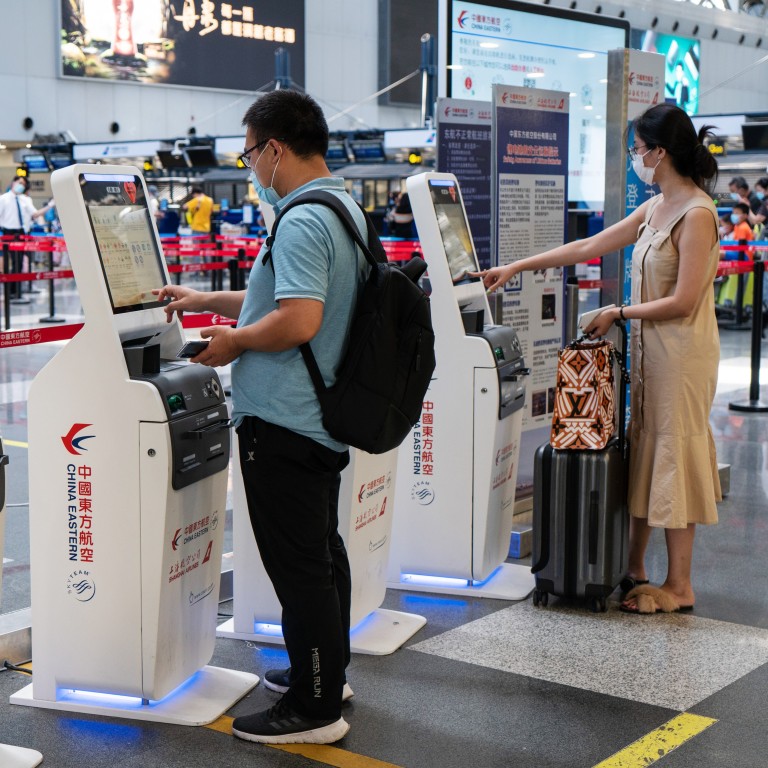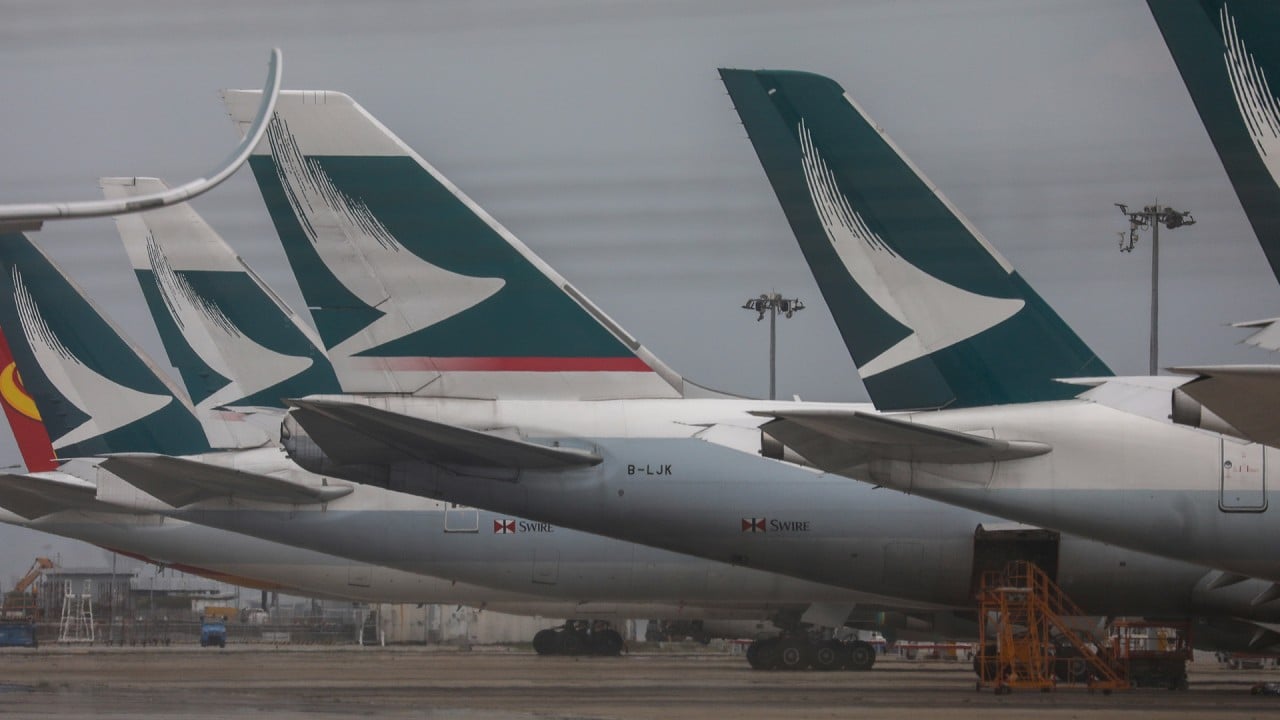
China’s top three carriers see domestic passenger numbers soar in July, pointing to recovery of aviation sector
- Passenger numbers for Air China, China Eastern and China Southern rose about 25 per cent month on month in July as travel within the mainland picked up
- The so-called Big 3 flew a total of 22 million passengers domestically last month, more than 500 times as many flown by Hong Kong-based Cathay Pacific
China’s biggest airlines could provide some much-needed encouragement for an aviation industry starved of good news when they report earnings later this week.

01:57
Chinese airlines offer unlimited flights to coax travellers back as Covid-19 crisis is under control
Popular Chinese destinations include Jiuzhaigou, famous for its colourful lakes, and Yangshuo and cities such as Chengdu, Shanghai and Beijing. Some places are receiving almost three times the number of visitors than last quarter, HSBC Holdings analysts led by Parash Jain wrote in a note dated August 17, citing Trip.com data. Hotels have also become busier after the curbs were lifted. Occupancy rates in Shanghai reached 65.8 per cent in the August 9-15 week compared with just 6 per cent in February, state-run China Daily reported on Monday, citing the local government.

“This should boost load factors further and allow airlines to improve yields, a key profit driver,” Jain said, noting that Chinese carriers generate most profit on domestic routes. “Domestic traffic has been consistently showing signs of a recovery, while international traffic has still to take off meaningfully due to hurdles from travel restrictions and quarantine requirements,” he said.
Jain said passenger capacity could grow this month compared with August last year, a striking turnaround given how hard the virus hit. The damage has been so grave that the International Air Transport Association does not expect the world’s airlines to recover to pre-pandemic levels before 2024.

01:55
Cathay Pacific warns of historic HK$9.9 billion loss due to coronavirus pandemic
While the July traffic reports from the Big 3 showed an improvement at home, their international passenger traffic was still down 96 per cent or more from a year earlier. The carriers also took a beating in the first quarter with a combined loss of 14 billion yuan (US$2 billion) and, according to Jain, they are headed for a full-year loss of 24.2 billion yuan.
Second-quarter figures, which the three are due to release on Friday, should show an improvement from January-March thanks to higher passenger traffic and the yuan’s resilience against the dollar, Jain said.
Lower oil prices could also help numb some of the pain. Jet fuel fell to less than US$20 a barrel in May and is likely to average US$45 in 2020, according to Paul Yong, a Singapore-based aviation analyst at DBS Group Holdings.
“With revenue from domestic routes making up about two-thirds of total revenue for China’s Big 3 and with relatively low jet fuel prices, this should help them outperform their Asian peers that have higher international route exposure,” Yong said.
Yong has buy ratings on the Hong Kong-listed shares of all three carriers, as well as the mainland-listed stock of Air China and China Eastern. He has a hold recommendation on China Southern’s Shanghai-listed shares. The Big 3 are overwhelmingly rated buy or equivalent by analysts tracked by Bloomberg.
Shanghai-based Spring Airlines has also had a strong run on the stock market, outperforming all others on a gauge of carriers in the Asia-Pacific region with a gain of 20 per cent so far this quarter. The budget airline is also due to report earnings at the end of this week.
Air China’s net loss may worsen to 5.5 billion yuan in the second quarter as the virus enveloped the period and a second wave emerged in Beijing, according to Bloomberg Intelligence.
Domestic traffic is recovering well, but Air China is slightly more exposed than the others to international flights, analysts James Teo and Chris Muckensturm wrote this week. Cathay could add 2.5 billion yuan to Air China’s 9 billion yuan first-half net loss. Air China holds a 28 per cent stake in Cathay.

01:15
China prepares to open Hainan Ocean Flower Island, the world's largest man-made tourist isle
China Eastern could have the biggest quarterly loss at 6.5 billion yuan due to slower capacity recovery and weaker yields, Bloomberg Intelligence estimates. The airline is more reliant than its peers on business travellers, who have been slower to return, and its revenue could slide 72 per cent from a year earlier.
Its unlimited weekend travel pass offer may lift its load factor but could pressure yields in the second half. First-half net loss could reach 10.4 billion yuan.
China Southern’s second-quarter net loss may come in around 6.3 billion yuan as international travel is still limited, according to Bloomberg Intelligence. Cargo could be a bright spot as volumes and pricing improved due to a shortage of capacity and demand for medical shipments worldwide.
China Southern, which is the only major state-owned carrier that has not sold its air cargo business, is expect to post a first-half operating loss of 11.3 billion yuan.

